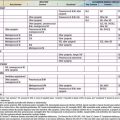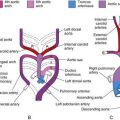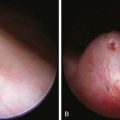Chapter 230 Histoplasmosis (Histoplasma capsulatum)
Adderson EE. Histoplasmosis in a pediatric oncology center. J Pediatr. 2004;144:100-106.
Adderson EE. Histoplasmosis. Pediatr Infect Dis J. 2006;25:73-74.
Assi MA, Sandid MS, Baddour LM, et al. Systemic histoplasmosis a 15 year retrospective institutional review of 111 patients. Medicine. 2007;86(3):162-169.
Bracca A, Tosello ME, Girardini JE, et al. Molecular detection of Histoplasma capsulatum var. capsulatum in human clinical samples. J Clin Microbiol. 2003;41:1753-1755.
Centers for Disease Control and Prevention. Outbreak of histoplasmosis among travelers returning from El Salvador—Pennsylvania and Virginia, 2008. MMWR Morb Mortal Wkly Rep. 2008;57:1349-1352.
Goodwin RA, Loyd JE, Des Prez R. Histoplasmosis in normal hosts. Medicine. 1981;60:231-266.
Guedes HL, Guimaraes AJ, Muniz Mde M, et al. PCR assay for identification of Histoplasma capsulatum based on the nucleotide sequence of the M antigen. J Clin Microbiol. 2003;41:535-539.
Hajjeh RA, Pappas PG, Henderson H, et al. Multicenter case-control study of risk factors for histoplasmosis in HIV infected persons. HIV/AIDS. 2001;32:1215-1220.
Kauffman CA. Histoplasmosis: a clinical and laboratory update. Clin Microbiol Rev. 2007;20:115-132.
McLeod DSA, Mortimer RH, Perry-Keene DA, et al. Histoplasmosis in Australia. Medicine. 2011;90:61-68.
Mocheria S, Wheat LJ. Treatment of histoplasmosis. Semin Respir Infect. 2001;16:141.
Odio CM, Navarrete M, Carillo JM, et al. Disseminated histoplasmosis in infants. Pediatr Infect Dis J. 1999;18:1065-1068.
Swartzentruber S, Rhodes L, Kurkjian K, et al. Diagnosis of acute pulmonary histoplasmosis by antigen detection. Clin Infect Dis. 2009;49:1878-1882.
Tobon AM, Franco L, Espinal D, et al. Disseminated histoplasmosis in children: the role of itraconazole therapy. Pediatr Infect Dis J. 1996;15:1002-1008.
Walsh TJ, Seibel NL, Arndt C, et al. Amphotericin B lipid complex in pediatric patients with invasive fungal disease. Pediatr Infect Dis J. 1999;18:702-708.
Wheat LJ, Freifeld AG, Kleiman MB, et al. Clinical practice guidelines for the management of patients with histoplasmosis: 2007 update by the Infectious Diseases Society of America. Clin Infect Dis. 2007;45:807-825.
Wheat J, Hafner R, Wulfsohn M, et al. Prevention of relapse of histoplasmosis with itraconazole in patients with the acquired immunodeficiency syndrome. The NIAID Clinical Trials and Mycoses Study Group Collaborators. Ann Intern Med. 1993;118:610-616.
Wheat LJ, Kauffman CA. Histoplasmosis. Infect Dis Clin North Am. 2003;17:1-19.
Whitt SP, Koch GA, Fender B, et al. Histoplasmosis in pregnancy: case series and report of transplacental transmission. Arch Intern Med. 2004;164:454-458.
Woods JP, Heinecke EL, Leuke JW, et al. Pathogenesis of Histoplasma capsulatum infection. Semin Respir Infect. 2001;16:91-101.






